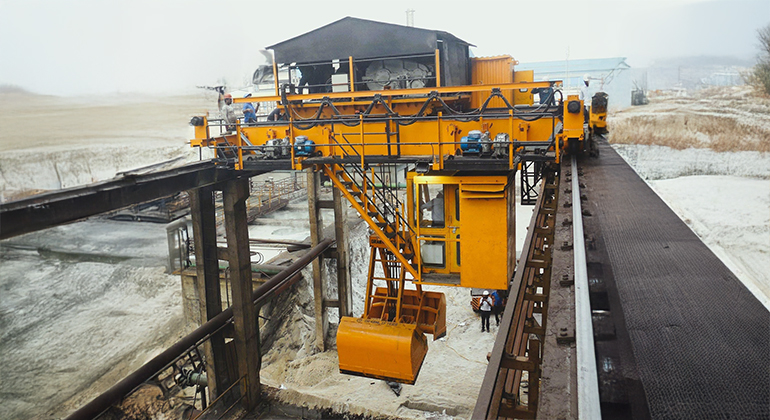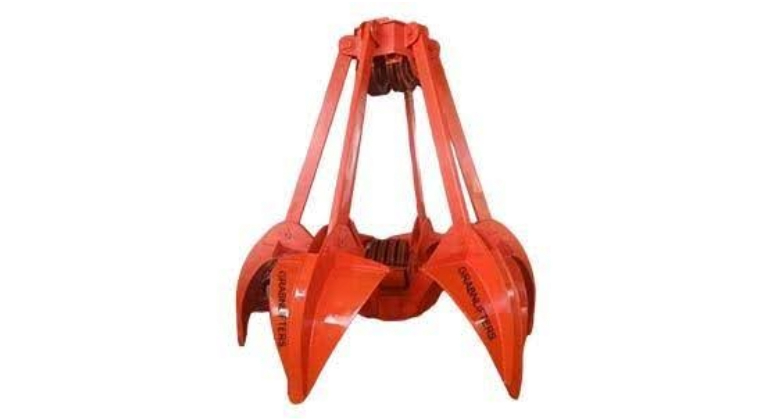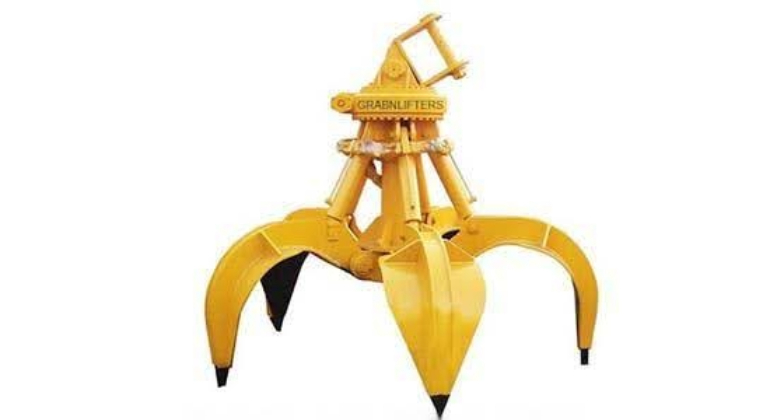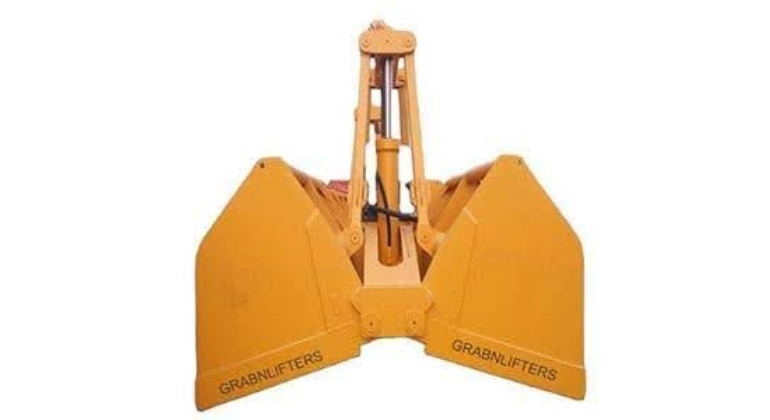Sy.No.819/Part, Kistapur Road, Medchal, Hyderabad.
A Comprehensive Guide To The Different Types Of Grab Crane

22 April, 2024
A Comprehensive Guide To The Different Types Of Grab Crane
The manufacturing industry requires grab cranes as their main material-moving equipment to handle heavy bulk items including metal scraps and coal and waste materials. The cranes come with grab buckets that function as efficient material extractors and transporters which minimise material loss while increasing operational speed. The marketplace features grab cranes with different types suitable for various operational needs. This article explains the complete picture about the prevalent grab crane types which were developed through different mechanisms and design approaches.
HYDRAULIC GRAB CRANES
The operation of grab buckets through hydraulic cylinders serves as the control mechanism for hydraulic grab cranes. These devices provide both accurate position control and robust gripping powers which enable their effective use for managing large or oddly shaped materials including scrap metal and large stones. This particular crane serves best in scrap yards and provides effective waste handling during construction as well as metal recycling operations and port logistical duties.
MECHANICAL GRAB CRANES
Mechanical grab cranes rely on rope or cable mechanisms for their operation. These cranes do not require a hydraulic system and are categorised based on the number of ropes involved. These are simple in design and ideal for light materials like sand, grain, or coal. The grab opens when it touches the ground and closes when lifted in one wire rope bucket, the grab opens/closes with two running ropes and lifted/lowered with the help of two supporting ropes in 4 wire rope grab buckets.
ELECTRO-HYDRAULIC GRAB CRANES
Electro-hydraulic grabs combine the strength of hydraulic systems with the convenience of electrical control. They are self-contained units that only need an electrical power supply from the crane. These grabs are commonly used with cranes that have only a hook or single cable and are frequently found in port terminals, cargo yards and other bulk material handling stations.
CACTUS GRAB CRANES
These grabs are designed with multiple curved tines (4–6 arms) that close around the material, much like an orange peel. Also called cactus grabs, they are ideal for handling bulky, irregular, or tangled materials such as scrap steel or waste. It is most widely used in steel plants, waste processing, demolition sites, and scrap yards.
CLAMSHELL GRAB CRANES
Clamshell grabs feature two hinged shells that close together to scoop up loose materials like sand, gravel, or fertilisers. They are widely used in port operations and construction sites for their precision and efficiency. They are ideal for loose bulk material with fine or medium granularity.
A suitable grab crane must take into account both the handled materials and environmental conditions that affect its operations. The performance capabilities of hydraulic grabs help support basic functions which mechanical versions accomplish for fundamental needs. The optimal materials for Cactus grabs include irregular objects yet clamshells function best with fine bulk materials. Every sector needs complete understanding of grab crane types to achieve efficient and safe operations.



